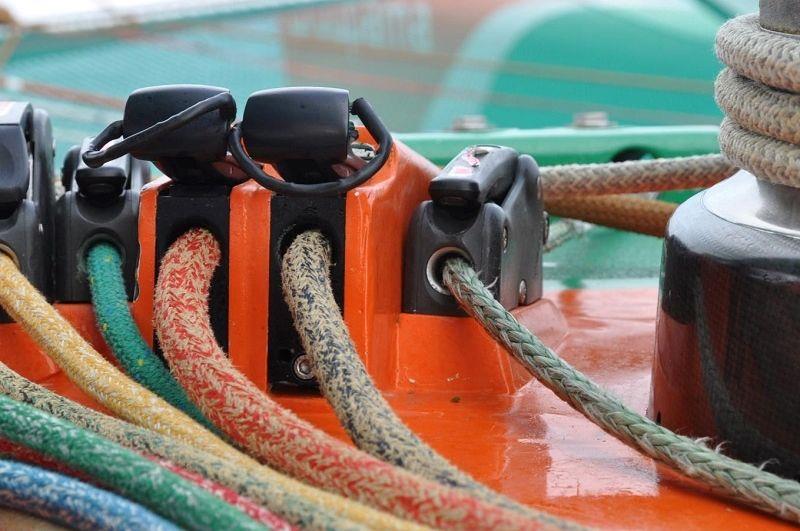
Basic Rope Maintenance from Upffront
by Diego Sosa, Upffront 16 Jul 2018 01:28 PDT

Courtesy of Gottifredi Maffioli © Gottifredi Maffioli
Salt water and dirt tears away at the fibres of the rope, shortening their lifespan. 'Salty ropes' are damp, thus collect more dirt. Ropes aren't cheap. Proper maintenance ensures you get the most out of your ropes.
Cleaning lines isn't only a matter of cosmetics; clean ropes are easier to handle. This is especially the case for overworked ropes such as genoa and mainsheets. As a minimum, ropes should be cleaned properly at least once a year, at the end of the season.
General
1. Use only fresh water. Sometimes rope cleaning can be a simple freshwater rinse. Strong chemicals can damage ropes.
2. Use cleaners with pH values between 8-9. If this sounds too complicated (or if you aren't into chemistry), then stick with laundry detergent.
Washing
There are several ways to maintain your ropes. A few options are listed below:
A. Rinse: Lay the ropes on the deck, or your front porch / driveway. Scrub them with a mild soap and rinse with a hose or pressure washer. Hang up to dry.
B. Soak: Place the lines in a bathtub and let them soak for 24 hours. Scrub with a brush and rinse continuously. They can be hung on a clothesline or dried with an electric fan (no heat - see below).
C. Machine wash: Ropes must be washed in cool water (around 16 degreesC/ 60 degreesF) and at a slow cycle. Use either a pillow case or a mesh bag to prevent the lines from tangling; it is safe to say none of us are fans of untangling ropes! You might want to place the ropes through another cycle, considering that the spins of the washing machine are slower than usual.
Why don't any of these methods suggest machine drying?
Surely that would get you back out sailing in no time! Placing lines in the drier is nearly the opposite of rope maintenance.
For all methods, water temperatures should be low. Warm wash cycles might be effective for getting rid of dirt but at the cost of wearing down ropes.
Heat from driers will also disintegrate rope covers, and then cores, resulting in a frail rope.
Try to tie a figure 8 with a brittle rope!
Patience is key.
Conclusion
Whether you consider yourself a racer or a cruiser, ropes are an essential element of your sailing systems. Whenever possible, use a fresh water hose and generously douse all accessible running rigging and deck hardware.
How often you remove the rigging and give it some extra TLC depends on the boat. Lines should be maintained at the same rate that they are used!
To learn more about running rigging, check out our free guide at upffront.com